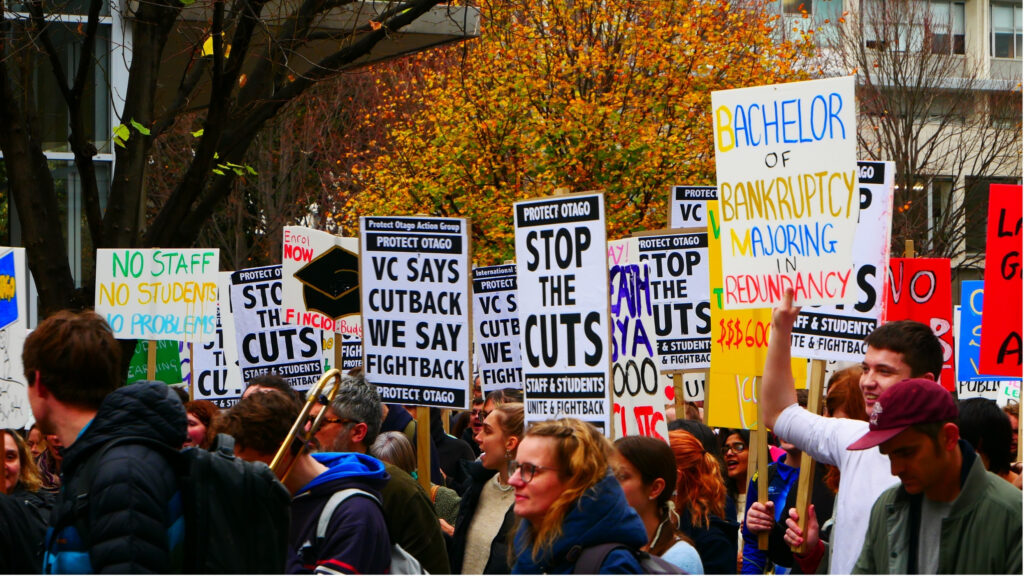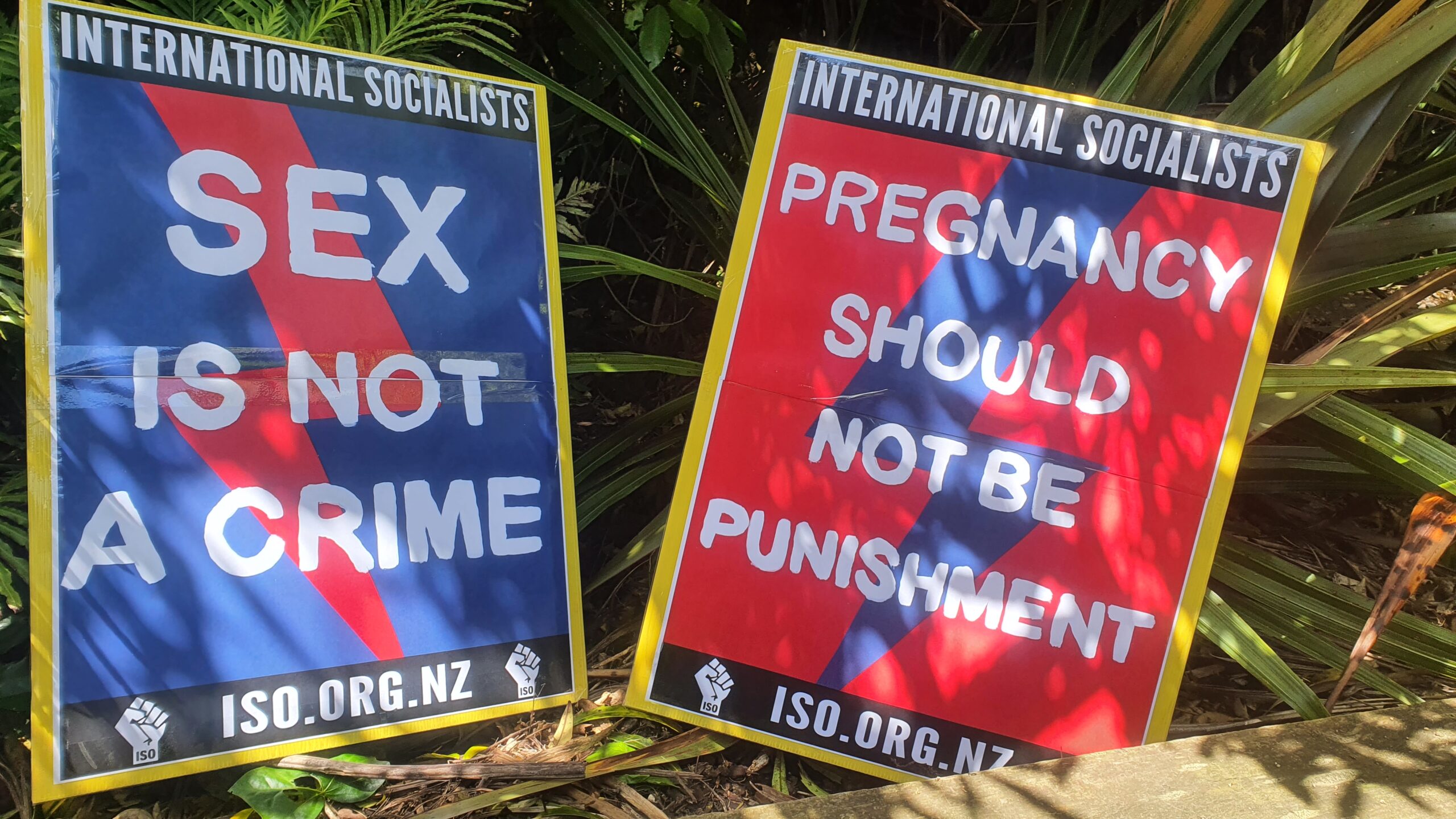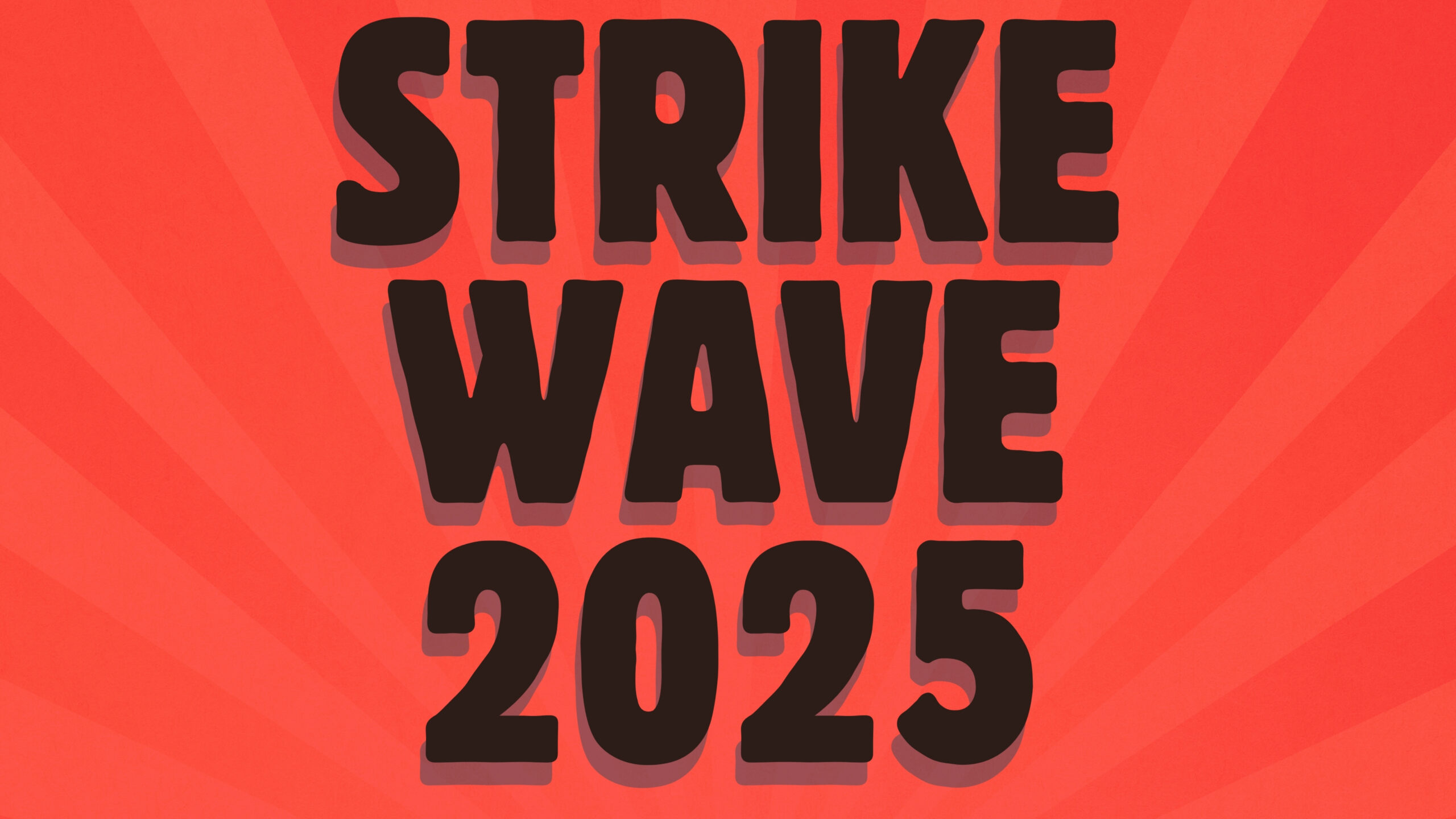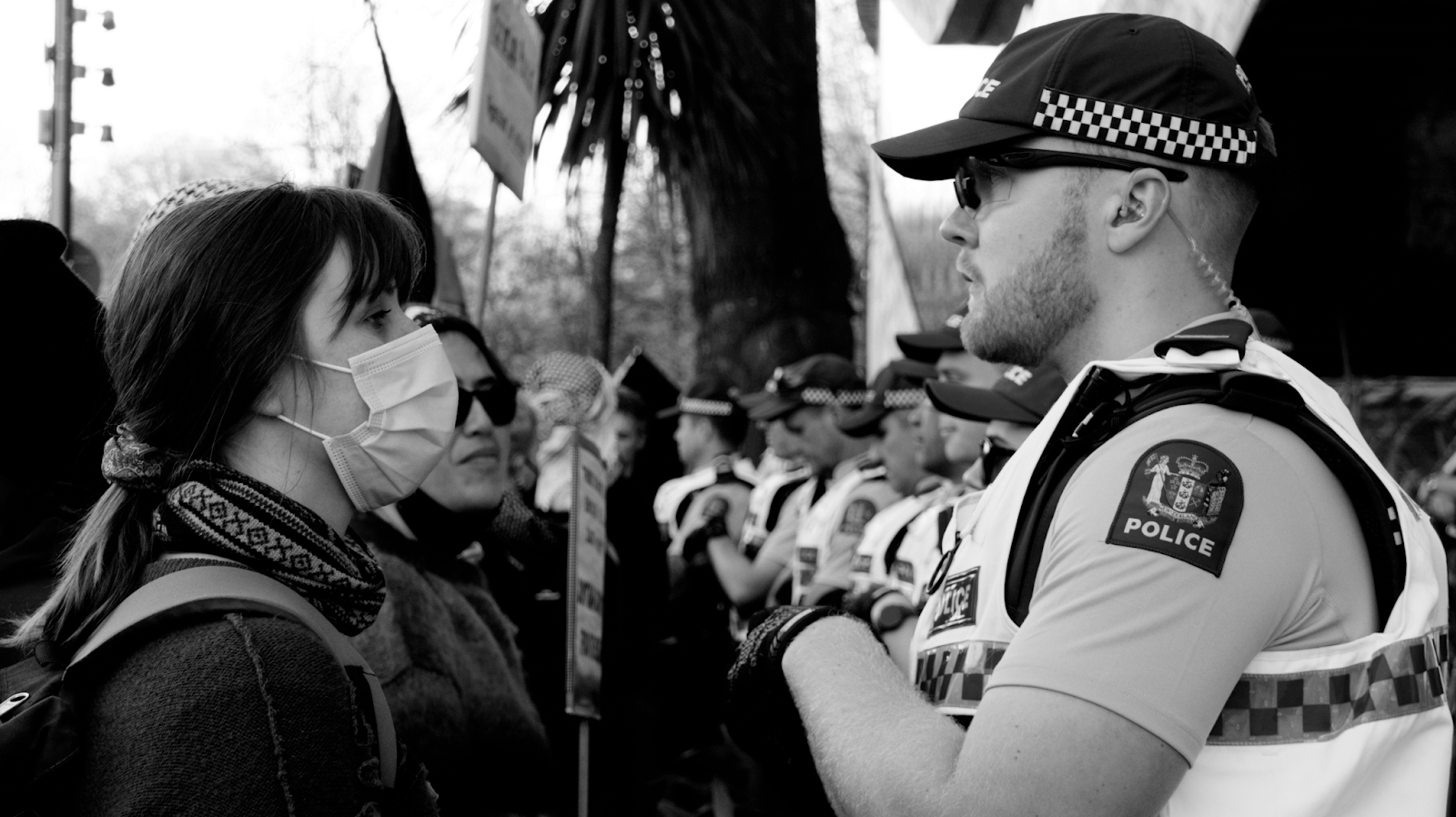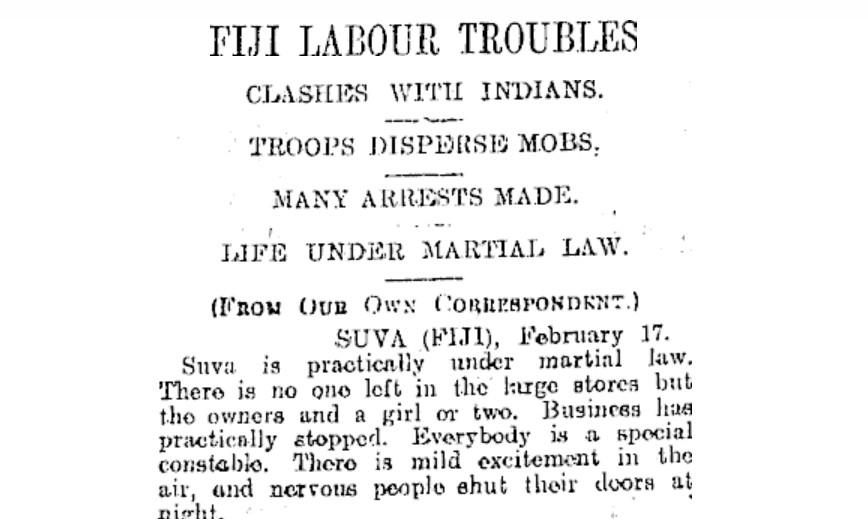Student politics are not limited to campus issues such as course costs. Student politics is about fighting for our future: fighting for the environment, our education, our job security, our health and wellbeing. If you care about having cheap food readily available on campus, not having to couch surf while studying because you’re in-between housing, being able to afford dental care, or having the university boycott, divest and sanction the genocidal Israeli terrorist state then you care about student politics.
What is the reality for students today?
Fighting for our living conditions is the baseline for student activism, and we students know just how hard things have been getting recently. The government chooses not to collect statistics on student homelessness and housing insecurity. There is also a lack of research into student hardship and poverty. The government does not collect data on us because they are afraid to expose the reality of student poverty.
In 2022 the Green Party partnered with student associations to collect data on student poverty, and found evidence of widespread hardship. Given the 2024 recession these results have undoubtedly worsened. The student allowance means-testing prevents 60 percent of students from accessing the student allowance. Rental payments comprise over 55 percent of student incomes, and for students on the allowance these are a direct stipend from the government to landlords. Of these rentals, 15 percent are in subpar condition, being mouldy, cold, crowded or run-down. As such, 66 percent of students can’t afford food, clothing, to pay bills, to get the health care they need or other basics on their weekly income. Disabled, Māori, and Pasifika students are especially affected.
Can we really make change?
Yes! There is hope for change, but change won’t come from above and it won’t be an immediate flipping of a switch. The university administration and our student associations are black holes of time and energy. Real change can only come from independent, democratic student organising which can put pressure on the university, and government, and hold those in power to account. This requires a thoroughly socialist program of student control, political organising and militancy. In the short term this means rebuilding socialist politics on campus – rebuilding the idea that we can be a self-acting political class. In the long term it means national coordination to fight for wider demands such as the reversal of VSM.
What is Voluntary Student Unionism?
New Zealand students’ associations currently operate under Voluntary Student Membership (VSM), which means students are not automatically enrolled as members. This has been a crushing blow to student politics as it destroyed student associations’ financial independence. VSM was first adopted at University of Auckland in 1999, and then was implemented nationwide in 2011 with the Education Amendment Act. This gave universities the right to collect the student levy rather than students’ associations. Associations are now dependent on universities for funding, meaning they cannot be used unapologetically for student interest.
Auckland University Students’ Association, for example, receives 65 percent of its funding – $1.29 million – from the university. Today students at Waipapa Taumata Rau Auckland University (WTR) pay $1,108.80 dollars in student levy fees for full time study – around $139 per paper. Students have little say in how this is spent: we can only provide input through “levy surveys”. These surveys are discussed by the Student Consultative Group (SCG) which includes university bureaucrats, members of AUSA and other student associations, and faculty reps. The SCG has no way to compel the university to follow their suggestions. The power instead lies with the University Council, which has 13 members: the vice-chancellor, three elected members (one student, one professional staff and one academic staff), four members appointed by the minister of education, and five appointed by the Council. The balance of power always leans away from students and workers and towards the university management and government.
What is the role of student associations?
By and large, student associations play three roles on campus: they are a pressure valve for student politics, they shape student consciousness and politics, and they provide a rubber stamp for the universities to say they have consulted students.
Take AUSA, for example. Massive energy is put into student elections: 42 people are running this year; each with campaigns, Instagram pages, promotional material and community engagement. Many of these students recognise issues such as the deterioration of living conditions, the loneliness and exclusion students feel, the sterile and cultureless campus, and want to change things for the better. Many are also enticed by the honorarium that comes with these positions. For one month students get to try their hands at organising, promising change. These students are met with a depressing fact: that AUSA operates on a $172,000 deficit.
Students’ associations and student elections shape students’ ideas about what is possible and what are legitimate ways of engaging in struggle. It is necessary for candidates and executives to think like managers as they find themselves pulled between being student representatives and mediators of the association-university relationship. For example, AUSA’s Student Voice Manager, Mauricio Lozano, explained to students at the AUSA executive training that setting up a foodbank would cost $25 thousand dollars a year. After it is set up, who would run it? Who would procure and deliver the food? Volunteers? Employees? What is possible becomes what is possible within the confines of the current student association structures. Student elections act in a similar manner, curtailing “legitimate” student politics to the politics of electoralism.
In these positions, if you wish to secure more funding and therefore do good for students, you are forced to become a “mediator”. At WTR, student executives are expected to sit on over 14 committees, taking up hours of their time. The university pays AUSA enough money each year to keep the staff fed and students placated. The annual election – which has less than a 10 percent participation rate – is a mandate the university uses to show they have gathered student voice. They then ruthlessly exploit the executive. The workload is decided by the individual students, with those who care the most putting in up to 60 hours a week to try and represent and care for the student body.
What if that energy was put into organising students instead?
Student Association or Student Movement
Is it worth it to contest your association’s elections? Yes, but for a specific reason: to advocate for student struggle, with an awareness that doing so will expose the limits of student associations as mediators rather than unapologetic fighters for students. Members of our organisation, the International Socialist Organisation of Aotearoa, ran in AUSA elections to use this platform to engage with students and student groups, to help build a student movement and socialism from below.
Whether you are inside or outside student associations, we advocate for open, democratic, grassroots student organising and protest. Student politics cannot be restricted to university channels, we must remind students we don’t need student associations to “represent” student voice, we have a voice of our own and it sounds the best when coming out of a loud hailer!
Image: Students at Otago rally against cuts in 2023. Photo by Mark McGuire, CC BY 4.0

